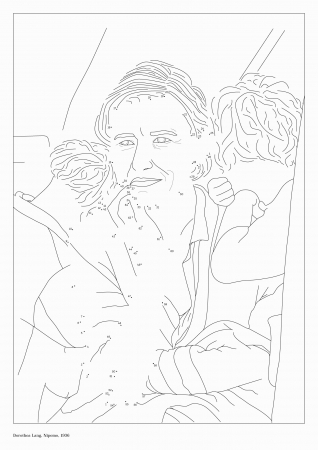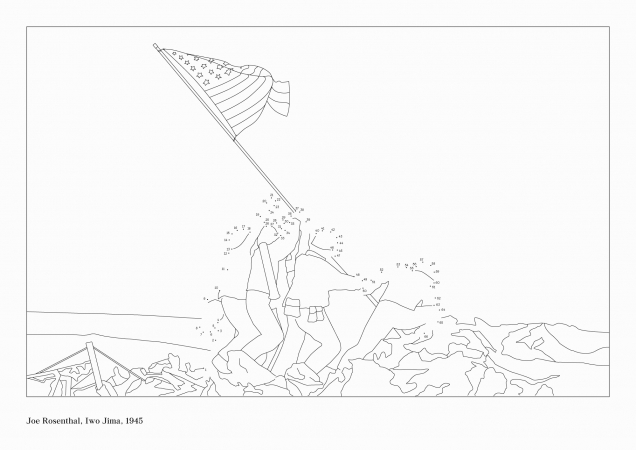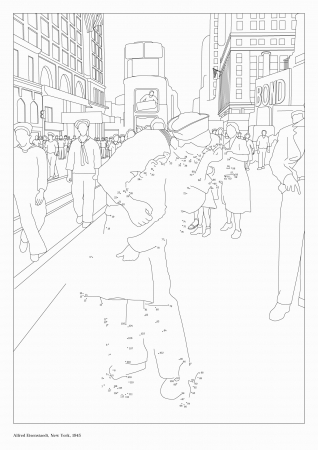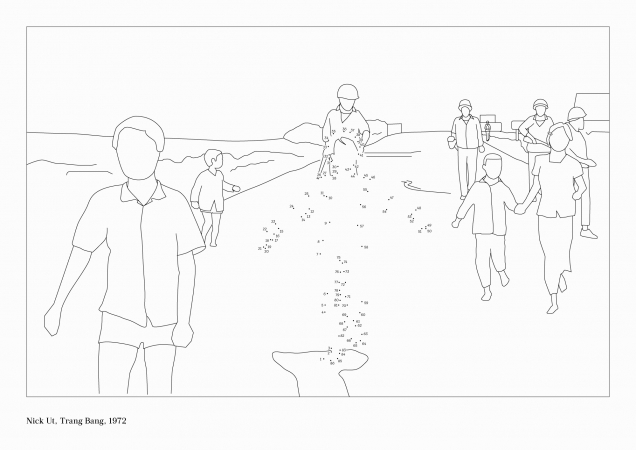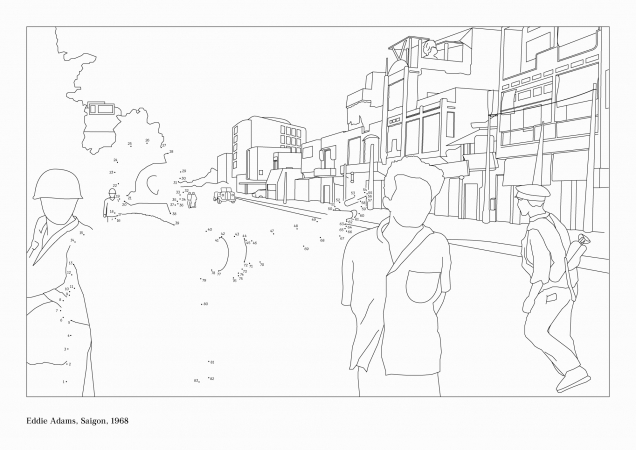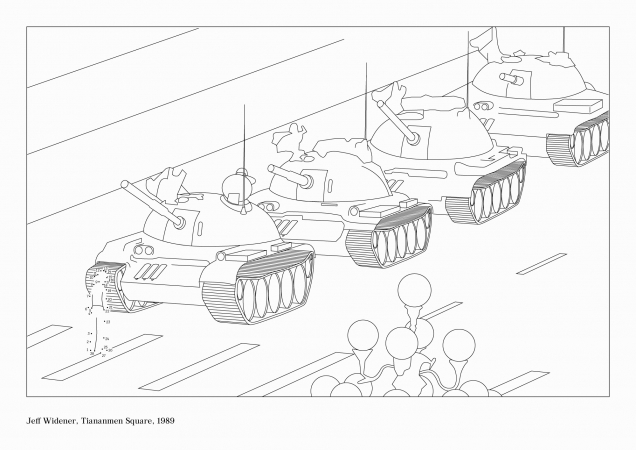As a young child I loved playing “connect the dots” and “color by numbers.” I still remember one kit I received as a present that included the famous battles of the Civil War. It was my introduction to Gettysburg, Bull Run, Shiloh, and Antietam. I knew very little about the Civil War when I started, but by the time I was done I had a strong sense for the difference between Yankees and Rebels, i.e., the blue and grey, the North and the South, and more a somewhat romanticized sense of national, military heroism. What made it especially engaging was the way in which connecting the dots and then coloring in the scene as scripted by the numbers cast the illusion of my active participation in the artistic process and, by extension, the historical moments being represented. I remember my parents framing the four pictures and they hung on my bedroom wall until I was a teenager and the artistic remnants of my adolescence were replaced with posters of rock ‘n roll stars.
The photographs reproduced in connect the dots fashion by MacDonaldStrand as part of the Most Popular of All Time exhibition operate in a somewhat similar fashion as they rely on what those who study rhetoric call an enthymematic sensibility. An “enthymeme” is a socio-logical argumentative form that suppresses one part of an argument—usually the major or minor premise—with the assumption that it is more or less implicit and the audience will recognize and supply it; the key effect of enthymematic reasoning is that it requires the audience to become actively involved in the production of the argument by providing the missing part and thus, in some measure, forcing them to identify with and own the argument. MacDonaldStrand’s “drawings” rely on what we might call a “visual” enthymeme inasmuch as the images are largely recognizable but they also require (and enable) the audience’s active participation in making them complete by supplying the suppressed and missing information.
The point is a simple one, but worth stressing: These iconic photographs are typically treated as signs of national identity. They mark important historical moments, are recognizable and meaningful across generations and a wide array of demographic stratifications, and invoke strong emotional identifications that can range from civic piety to cynicism. And yet for all of that, one does not need to know the particular details surrounding any of them to recognize their cultural significance or the civic meanings that they impute and/or perform. Recasting them in connect the dots form, suppressing most of the visual information that one finds in the photographs themselves—color, shade, sharpness, definition, focus, etc.—as well as some of the key figures performing the central action of the images underscores their cultural significance by calling attention to the enthymematic logic upon which they rely and the ways in which their meaning is animated by the audience’s participation in making them whole.
Critics often wonder what it is that makes an iconic photograph iconic. One answer to that question might be the way in which the visual/rhetorical logic of such images invite–and perhaps even rely upon–a broad public of active spectators to supply the missing or implied information or knowledge that completes the photographic and gives it is cultural resonance. Spectatorship is often seen as a passive activity, but with the iconic photograph it may well be that spectatorship takes on a more performative role in which the viewer is cast as an active participant in the making of meaning … as well as the making of history.
